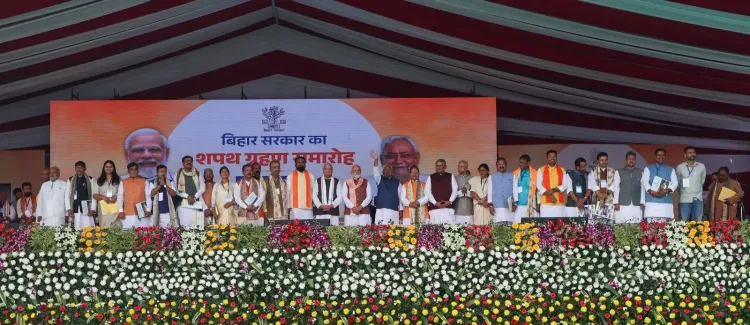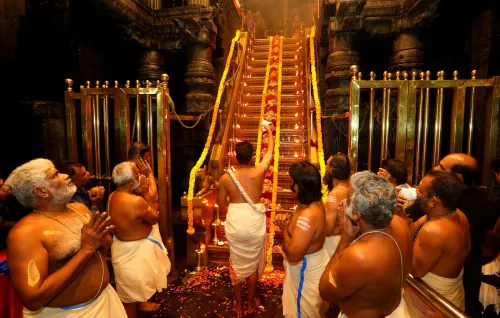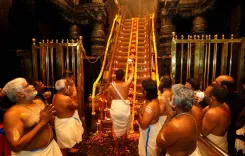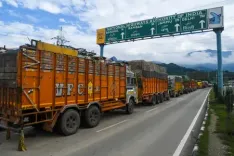How Has Caste Representation Shaped the New Nitish Kumar Government?

Synopsis
Key Takeaways
- Caste representation is key in Bihar's political landscape.
- Nitish Kumar's cabinet includes 26 ministers from diverse backgrounds.
- The BJP has shifted its focus towards Rajput representation.
- Inclusivity efforts extend to Muslim and EBC communities.
- This cabinet reflects a strategic move to consolidate broader social support.
Patna, Nov 20 (NationPress) The consideration of caste representation has emerged as a crucial element in the establishment of the new Bihar government, which was inaugurated on Thursday at the historic Gandhi Maidan.
Nitish Kumar has taken his oath as Chief Minister for the tenth time, with a total of 26 ministers joining the new cabinet, representing various constituents of the NDA -- comprising 14 from the BJP, eight from the JD(U), two from the LJP(RV), and one each from RLM and HAM.
In the previous administration, senior BJP figures Mangal Pandey and Nitish Mishra represented the Brahmin community. However, this time, the BJP has decreased the representation of Brahmins, keeping only Mangal Pandey while no Brahmin MLA from the JD(U) has been allocated a ministerial position, indicating a notable shift in the caste dynamics.
The BJP has notably emphasized the Rajput community, a traditional stronghold, by including four ministers -- Sanjay Tiger, Shreyasi Singh, Leshi Singh, and Sanjay Singh -- from this demographic, marking a strategic move to strengthen Rajput support in the state.
Furthermore, two significant leaders, Vijay Kumar Sinha and Vijay Chaudhary, have been selected from the Bhumihar community, which continues to hold considerable political power in Bihar.
Nitin Naveen, representing the Kayastha community, is recognized as an influential BJP figure, particularly in urban areas like Patna.
As OBCs constitute the largest social group in Bihar politics, the cabinet mirrors this demographic reality with representatives like Samrat Choudhary (Kushwaha/Koeri) as Deputy Chief Minister, Deepak Prakash (Kushwaha), Ram Kripal Yadav and Vijendra Prasad Yadav from the Yadav community, and Shravan Kumar (Kurmi), a long-time ally of Nitish Kumar.
By incorporating two Yadav ministers, the NDA aims to deliver a clear message to the community about its intent for broader social inclusion beyond traditional voter bases.
The NDA has also maintained robust representation for the Extremely Backward Classes (EBCs), who have played a vital role in its electoral achievements, including ministers like Surendra Mehta (Dhanuk), Rama Nishad (Nishad/Mallah), Madan Sahani (Mallah), Lakhendra Kumar Roshan (Paswan), Sunil Kumar (Ravidas), Santosh Kumar Suman (Manjhi community), and Sanjay Kumar (Paswan).
This extensive representation highlights the NDA's ongoing commitment to retaining its influence among EBCs.
By including Mohammad Jama Khan, the NDA has also signaled its intent for inclusivity towards the Muslim community, a move that, while limited in numbers, carries substantial political implications in the current scenario.









